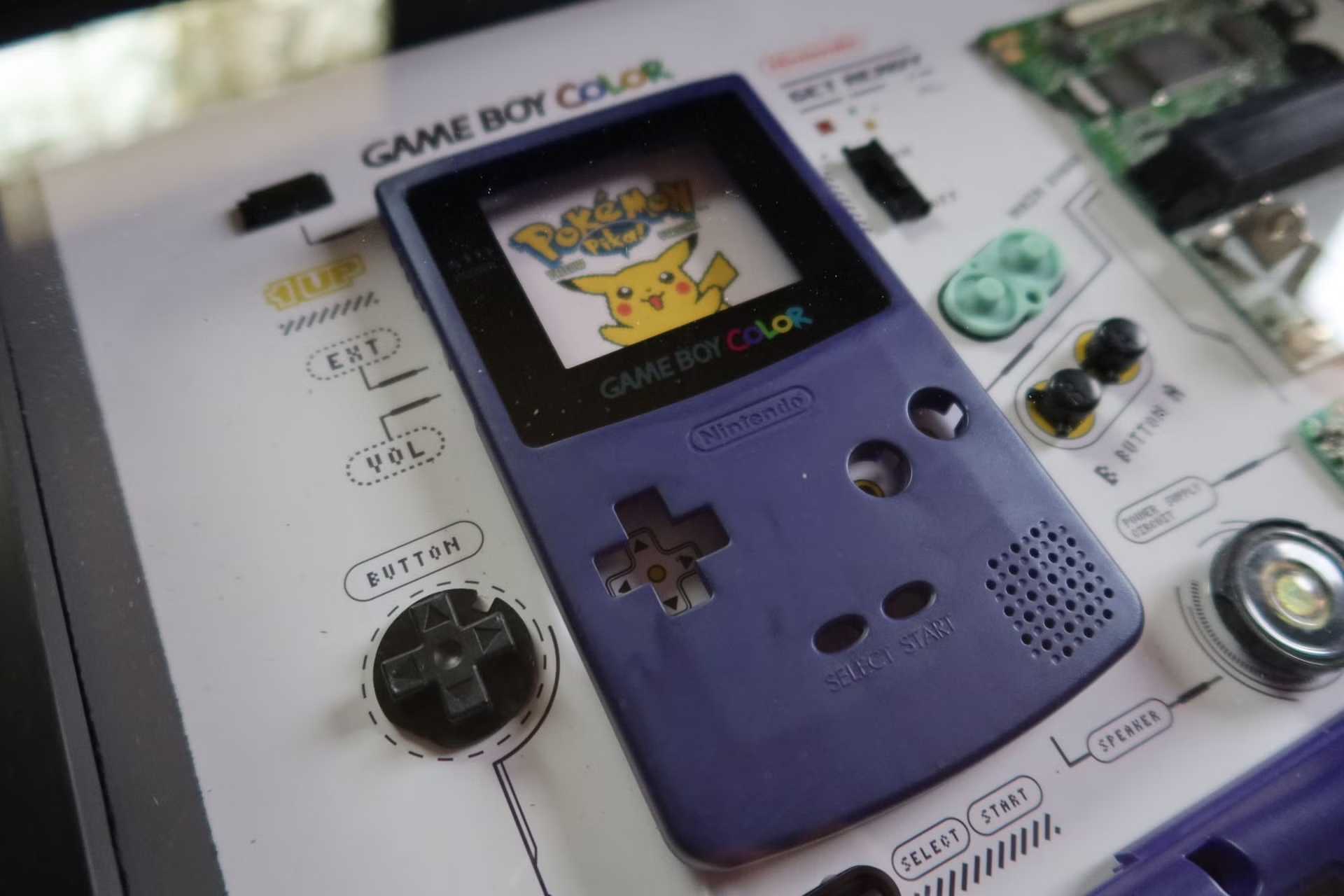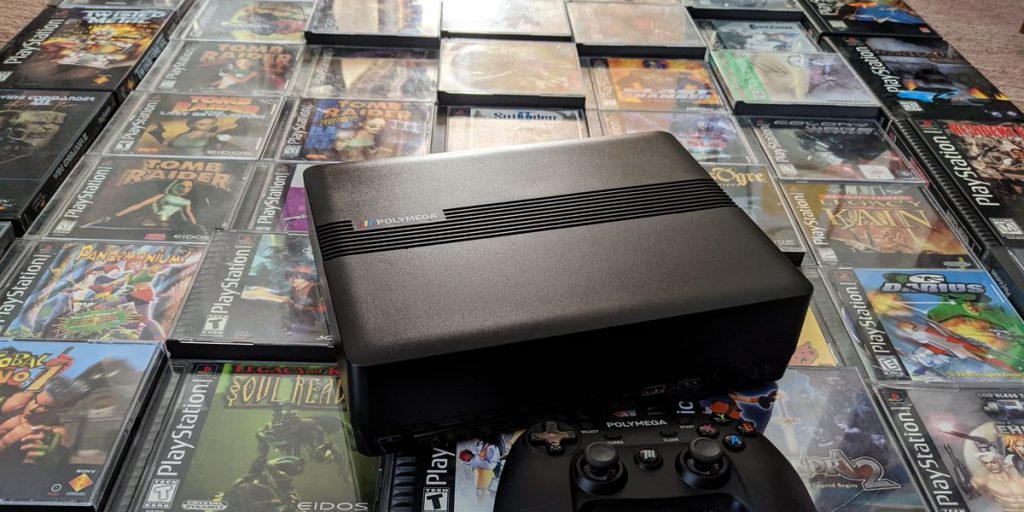For gamers of a certain age, the allure of retro consoles is undeniable. The pixelated graphics, the catchy chiptune music, and the simple joy of mastering a challenging game all hold a special place in our hearts. The Game Grid 2 aims to capitalize on that nostalgia, promising a treasure trove of classic titles in a convenient plug-and-play package. But does it deliver the retro gaming experience of our dreams, or is it a cheap imitation? Let’s delve deeper.
Plug and Play Simplicity
One of the Game Grid 2’s biggest selling points is its ease of use. Unlike some retro consoles that require fiddling with cartridges or emulation software, the Game Grid 2 boasts a truly plug-and-play setup. Simply connect the console to your TV via HDMI, plug in the included wired controllers, and you’re good to go. This straightforward approach makes it perfect for casual gamers or those who aren’t tech-savvy.

A Library of Retro Gems (or Maybe Pebbles?)
The Game Grid 2 boasts a staggering library of over 100,000 games. This sheer number is impressive at first glance, conjuring images of endless nights spent rediscovering forgotten classics. However, upon closer inspection, the quality of the library becomes somewhat questionable. Many of the included titles are obscure knock-offs or generic platformers. While some beloved franchises like Mario and Sonic are present, discerning players might be disappointed by the lack of depth and the absence of many iconic titles.
Performance: Hit or Miss
The performance of the Game Grid 2 is a mixed bag. On the positive side, most games run smoothly with minimal lag. This is crucial for retro titles where precise controls are essential. However, some users have reported issues with emulation accuracy. Certain games may exhibit graphical glitches or slowdown, which can be a real immersion breaker. Additionally, the audio quality can be inconsistent across different titles, further detracting from the overall experience.

Controller Comfort: A Case of Déjà Vu
The included wired controllers in the Game Grid 2 are designed to resemble classic gamepad designs. While this evokes a sense of nostalgia, the actual ergonomics leave something to be desired. The controllers feel lightweight and somewhat cheap, lacking the satisfying heft of their original counterparts. For extended gaming sessions, these controllers might cause discomfort.
The Verdict: Nostalgia with Limitations
So, where does the Game Grid 2 stand? If you’re a casual gamer looking for a quick dose of retro fun, it might be a decent option. The ease of use and the vast (though uneven) game library offer a certain appeal. However, for hardcore retro enthusiasts, the limitations become more apparent. The lack of licensed classics, the emulation inconsistencies, and the somewhat cheap-feeling controllers hold the Game Grid 2 back from achieving true retro greatness.

Is There a Better Alternative?
Here’s the thing: the retro gaming scene thrives on emulation. There are numerous dedicated emulation devices and software options available that offer far greater control over game selection, customization, and overall performance. While these options might require a bit more technical know-how, they ultimately deliver a more authentic and satisfying retro experience.
The Final Word: Consider Your Needs
Ultimately, the decision of whether or not to get the Game Grid 2 boils down to your individual needs and expectations. If you crave a hassle-free way to revisit some retro classics casually, it might be worth a try. However, if you’re a serious retro gamer seeking a more comprehensive and polished experience, your money might be better spent exploring emulation options.

Additional Considerations:
Before you purchase a Game Grid 2, here are a few additional factors to consider:
- Price: The Game Grid 2 is priced competitively compared to other retro consoles. However, consider the value proposition – are you willing to sacrifice quality for convenience?
- Games List: While the advertised library boasts over 100,000 titles, research online to see if the specific games you’re interested in are actually included.
- Alternatives: Explore emulation options like Raspberry Pi or dedicated retro consoles from reputable brands before making a final decision.
Discussion on the functionality of online services, such as multiplayer and digital downloads.
The Game Grid 2’s focus on classic titles brings us to a key aspect missing from the retro era – online services. While online functionality wasn’t a feature of most retro consoles, its absence in modern retro consoles like the Game Grid 2 is worth discussing. Let’s delve into the potential benefits and drawbacks of online services in the realm of retro gaming.
The Allure of Online Multiplayer:
-
Rekindling Old Rivalries: Imagine battling your friends across the globe in a game of GoldenEye 007, just like the old days. Online multiplayer functionality could breathe new life into classic titles by enabling remote competition, fostering a sense of community, and reigniting friendly rivalries.
-
Expanding Horizons: Online play could introduce retro titles to a whole new generation of gamers. By connecting with online communities, players can discover hidden gems, learn strategies from veterans, and keep these classics alive for future generations.
Challenges and Considerations:
-
Limited Server Support: Retro games weren’t designed with online functionality in mind. Implementing and maintaining online servers for a vast library of titles could be a significant challenge for console makers like the Game Grid 2.
-
Preserving the Original Experience: The core appeal of retro games often lies in their local co-op or single-player nature. Introducing online elements might alter the original gameplay experience and atmosphere that many fans cherish.
Digital Downloads: A Missed Opportunity?
-
Convenience and Access: The ability to download specific retro titles could address a major shortcoming of the Game Grid 2 – its uneven game library. Online marketplaces could offer a wider selection of curated classics, allowing players to pick and choose the exact games they want to revisit.
-
Preservation and Discovery: Digital storefronts could also act as a platform for preserving and discovering retro games. Games that might be difficult to find physically could be easily accessed and purchased online, ensuring their continued availability for future generations.
The Balancing Act:
Ultimately, incorporating online services into retro consoles requires careful consideration. While online multiplayer and digital downloads offer exciting possibilities, they must be implemented thoughtfully to avoid compromising the core retro gaming experience.
Perhaps the ideal solution lies in offering optional online functionality for select titles that could benefit from it, while maintaining a focus on preserving the original gameplay experience for the majority of retro classics.

Analysis of the overall value provided by the console, considering its features and performance
The Game Grid 2 presents itself as a gateway to retro gaming bliss. However, a closer look reveals a console with both strengths and weaknesses that ultimately determine its overall value.
Strengths:
- Effortless Setup: The Game Grid 2 shines in its simplicity. Plug-and-play functionality makes it perfect for beginners or those seeking a hassle-free retro experience. No emulation software or fiddling with cartridges is required.
- Vast Game Library (on Paper): Boasting over 100,000 titles, the Game Grid 2 boasts an impressive quantity of games. This offers the potential for endless exploration and rediscovering forgotten gems.
Weaknesses:
- Questionable Game Quality: While the sheer number is enticing, the library’s quality is debatable. Many titles are obscure knock-offs or generic games, lacking the depth and iconic experiences many crave.
- Emulation Inconsistencies: Performance can be a mixed bag. While most games run smoothly, some suffer from emulation glitches, slowdown, and inconsistent audio, detracting from the overall experience.
Value Proposition:
Considering these factors, the Game Grid 2’s value proposition becomes clearer.
- Casual Gamers: For casual gamers seeking a quick dose of retro fun with minimal setup, the Game Grid 2 offers some appeal. The vast library, even with its limitations, provides options, and the ease of use is undeniable.
- Hardcore Retro Enthusiasts: For serious retro gamers, the value proposition weakens. The lack of licensed classics, emulation inconsistencies, and cheap-feeling controllers create a less than authentic experience. Here, emulation options often provide superior control over game selection, customization, and performance.
The Bottom Line:
The Game Grid 2’s value hinges on your expectations. If convenience and a broad (though uneven) game library are priorities, it might be worth considering. However, if an authentic and polished retro experience is what you seek, exploring emulation options might be a wiser investment.
By carefully considering these factors, you can make an informed decision about whether the Game Grid 2 is the right retro gaming solution for you.


